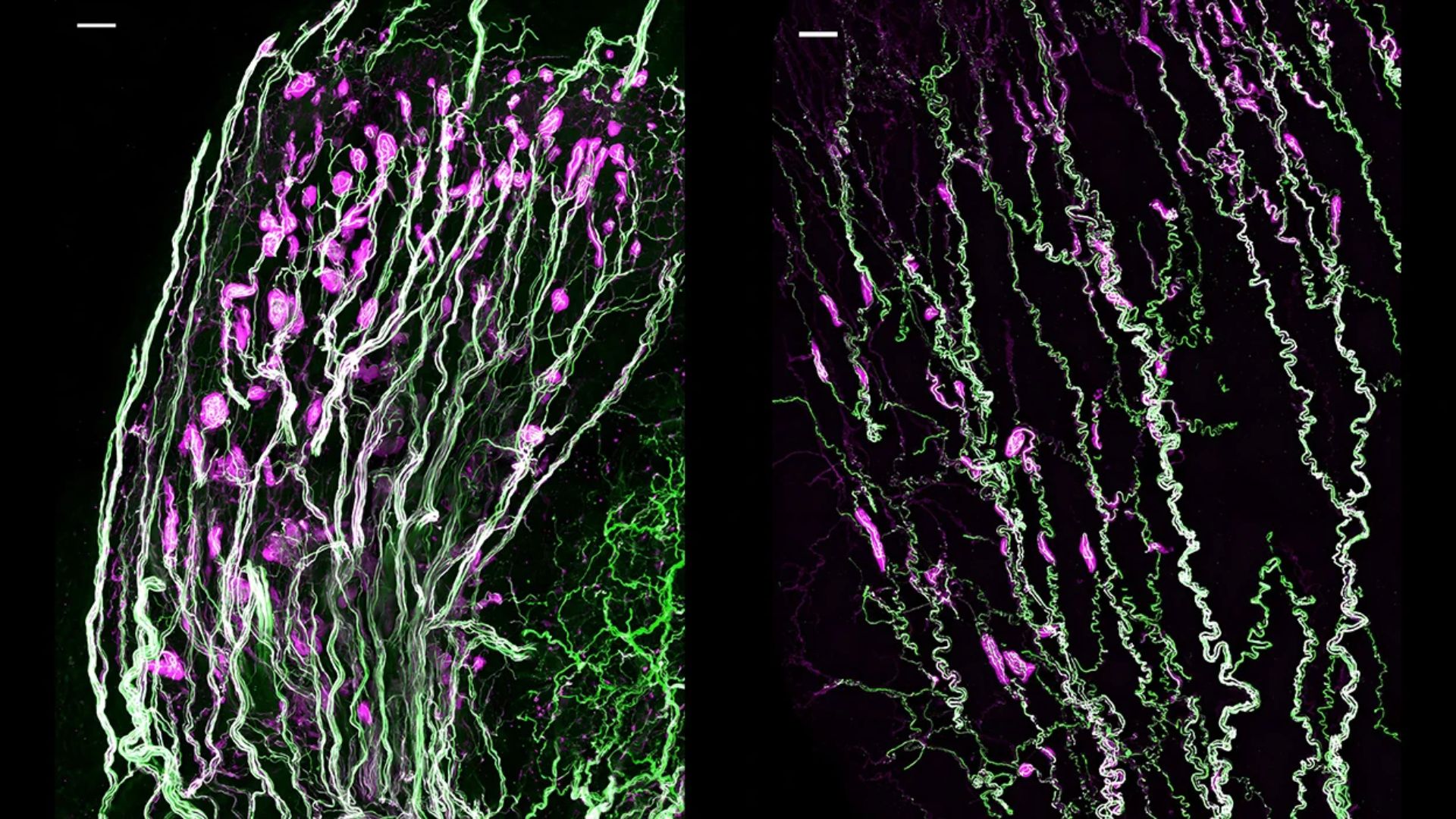A recent study found that specific nerve cells known as Krause corpuscles, located on the penis and clitoris, play a crucial role in sexual behavior.
A team of researchers from Harvard Medical School found that these cells detect vibrations and trigger responses such as erections and vaginal contractions.
This discovery could pave the way for new treatments for conditions such as erectile dysfunction and help restore sexual function in individuals with lower body paralysis.
Overcoming the taboo obstacle
Krause corpuscles, first discovered more than 150 years ago, are similar in structure to touch-activated corpuscles found on fingers and hands. These blood cells respond to vibrations as the skin moves over a structured surface.
However, due to the sensitive nature of the subject, their role in sexual functioning has remained largely unexplored.
“It’s been hard to get people to work on this because some people have a hard time talking about it,” says David Ginty, a sensory neurobiologist at Harvard Medical School in Boston, Massachusetts, who led the team.
To overcome this hurdle, Ginty and other sensory biologists used advanced molecular techniques to activate and track these neurons in mice.
They used different methods, such as mechanical pressure and electrical impulses, to stimulate these nerve cells in mice, both male and female.
Frequency of stimulation
The team found that the neurons in Krause’s corpuscles became active when exposed to low-frequency vibrations, specifically in the 40 to 80 hertz range.
Interestingly, Ginty pointed out that this frequency range is the same as the frequency range commonly used in various sex toys designed for humans.
“It appears that people realized this was the best way to stimulate Krause corpuscles before any official experiments were published,” the study said.
Surprisingly, both male and female mice were found to possess similar numbers of Krause corpuscles.
However, the study found that the clitoris, due to its smaller size, contains fifteen times as many Krause corpuscles as the penis. This increased density may explain why the clitoris shows increased sensitivity.
Role of Krause corpuscles in sexual response
To determine the exact role that Krause corpuscles play in sexual activity, the researchers used a technique involving genetic engineering. They modified mice so that the neurons in the blood cells would activate in response to a flash of light instead of the usual physical stimulation.
Activating these neurons in anesthetized mice caused sexual reflexes in both male and female mice. The researchers then discovered that the Krause corpuscles are connected to a specific area of the spinal cord.
Stimulating this area specifically caused erections in men and contractions in women, even when the spinal cord’s connection to the brain was severed. This suggests that these sexual reflexes are automatic and can occur even in the absence of brain input.
This finding could be particularly relevant for individuals with spinal cord injuries who may have lost the connection between their brain and sexual organs.
The study’s findings also shed light on the development of Krause corpuscles, showing that they mature just before mice reach sexual maturity. This suggests a possible link between hormonal changes during puberty and the development of these nerve cells.
Significance for human health
Although the study was conducted on mice, the findings have significant implications for humans. Krause corpuscles are present in both human reproductive organs, and their structure and function are believed to be similar to those in mice.
Therefore, the researchers believe that their findings could pave the way for new treatments for various sexual dysfunctions, such as erectile dysfunction and vaginal pain.
“It is a very comprehensive piece of work and opens up many different directions for many scientists,” said Elena Gracheva, a neuroscientist at Yale University in New Haven, Connecticut, emphasizing the importance of the study.
ABOUT THE EDITORIAL
Aman Tripathi An active and versatile journalist and news editor. He has provided regular and timely news for several leading publications and news media including The Hindu, Economic Times, Tomorrow Makers and many more. Aman has expertise in politics, travel and tech news, especially in AI, advanced algorithms and blockchain, with a strong curiosity for all things science and technology.
